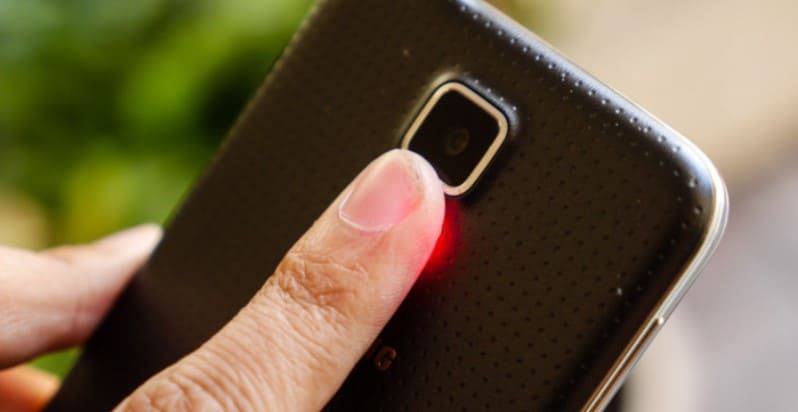
We’ve been talking about smartphone industrial design over the last week or so, and a big point raised over and over is that the last of the major plastic backed devices, the Samsung Galaxy S5, remains “the best phone Samsung ever made.”
Well, according to your comments anyway.
“If there was a smartphone company who perfected the use of plastic for their devices, it would be Samsung,” you said.
“I’m still using mine,” you said.
“I am still using my S5 … I’ve had this sucker for over 4 years now, it is durable – yes it is in an Otterbox with a tempered Zagg screen protector but it has survived hundreds (maybe over a thousand by now) of drops,” you told us.
“It still works perfectly,” even after surviving three weeks in a toilet.
Lots of you still hang on to your trusted classic Galaxies. You can still buy them outright too. Plenty of deals offer refurbished Galaxy S5 models working on 3G and 4G LTE, and six months of service at big discounts.
People love phones like the Galaxy S5 or even the Nexus 5, and it’s not just nostalgia. It’s time to talk aesthetics versus functionality, and how flashy phones don’t always follow trends for the right reasons.
Form, function, design, and sex appeal?
In the discussion about aesthetics that kicked off after we wrote about all those unattractive Samsung Galaxy phones, it’s only fair to talk about functionality. The Galaxy S5 and the Note 4 remain, as you argued, the epitome of smartphone practicality.
They don’t look a dime compared to an iPhone of the era, but where else could you get a removable back and battery, SD card slot, waterproofing, no “edge” design, and a build sturdy enough not to break when you dropped it? The Samsung Galaxy Active range has a lot of that, but it’s only half the picture. It’s sturdier and designed for rough and tumble living, sure, but still not repairable.
Just look at the automotive industry. Just because an old Jeep looks ugly to some, doesn’t mean it’s not everything you need. Some people want that kind of practicality in their cars, and in their smartphones too.
Samsung made a big leap with the Galaxy S6 to catch up with Apple’s aesthetic. It was the first Samsung phone critics called “premium.” Since then, the Android landscape rapidly changed gears, adopting sleek metal and glass designs across the board. In the process, phones’ practicality has taken a hit.
Just as so many decide that their car defines who they are or who they want to be, smartphones are one of the most essential and obvious accessories everyone owns. A smartphone is computing-made-fashionable and everyone can see what you’re using as you tap, swipe, and scroll — why wouldn’t you want one that looks sexy?
Cargo pants are useful, durable, and functional, but they aren’t sexy. The mainstream marketing ethos is “sex sells,” even when it comes to phones. It’s not just nice to have the best display, the best camera, the nicest looking phone — it’s attractive.
That’s a problem for consumers who just want a long-lasting phone packed with features. Not everyone worries about what other people think of their phone.
Right to repair, and so much more
The trend towards stylish phones and great looking devices has made arguments over the right to repair argument more heated. A modern Android phone shouldn’t just be a slippery all-glass device we pay $800 to have for a few years max, but that’s where we are. The best new phones are all closed up clamshells only repairable by their manufacturers.
This is a big part of why people still love the S5: it didn’t feel doomed to die. It and the Note 4 represent the last of Samsung’s true enthusiast devices, the classics people would love to see again. Wanting Samsung to return to this almost feels like asking if BMW could once again produce a classic like the BMW 2002 Tii — one of the best ever cars, but built for its time.
A return to removable polycarbonate backs would give us easier access to the battery and internals. The fear for companies is that an untrendy, unbeautiful device might reflect badly on them — and sell poorly. Many express their love for the plastic-backed Lumia devices, but they didn’t sell, and Nokia-in-Microsoft-clothing died out.
A new brand?
Maybe a sub-brand like a OnePlus could exist, a military-grade style pop-up under Samsung that isn’t just an S8 in Activewear, but a utilitarian dream. Gaming phones are being made for gamers. Why not service the die-hard Android enthusiasts, even if they only buy one phone every five years or so? Think about it; pure Android, a removable battery, headphone jack, waterproof, kind of ugly (but rugged), all with a polycarbonate back.
Some might say the LG V10 and V20 were exactly those phones. They had US MIL-STD-810G certification to prove ruggedness, removable batteries, and were a little ugly. Ultimately, you’re after a classic Samsung for what it was, not what it is today.
Maybe it’s not always best to follow the trend of bigger 18:9 screens, or a glass back, or a notch, or doing away with the headphone jack. Maybe we need to demand longer faster Android updates and security patches. Maybe we need something a little less beautiful and a little more practical.























